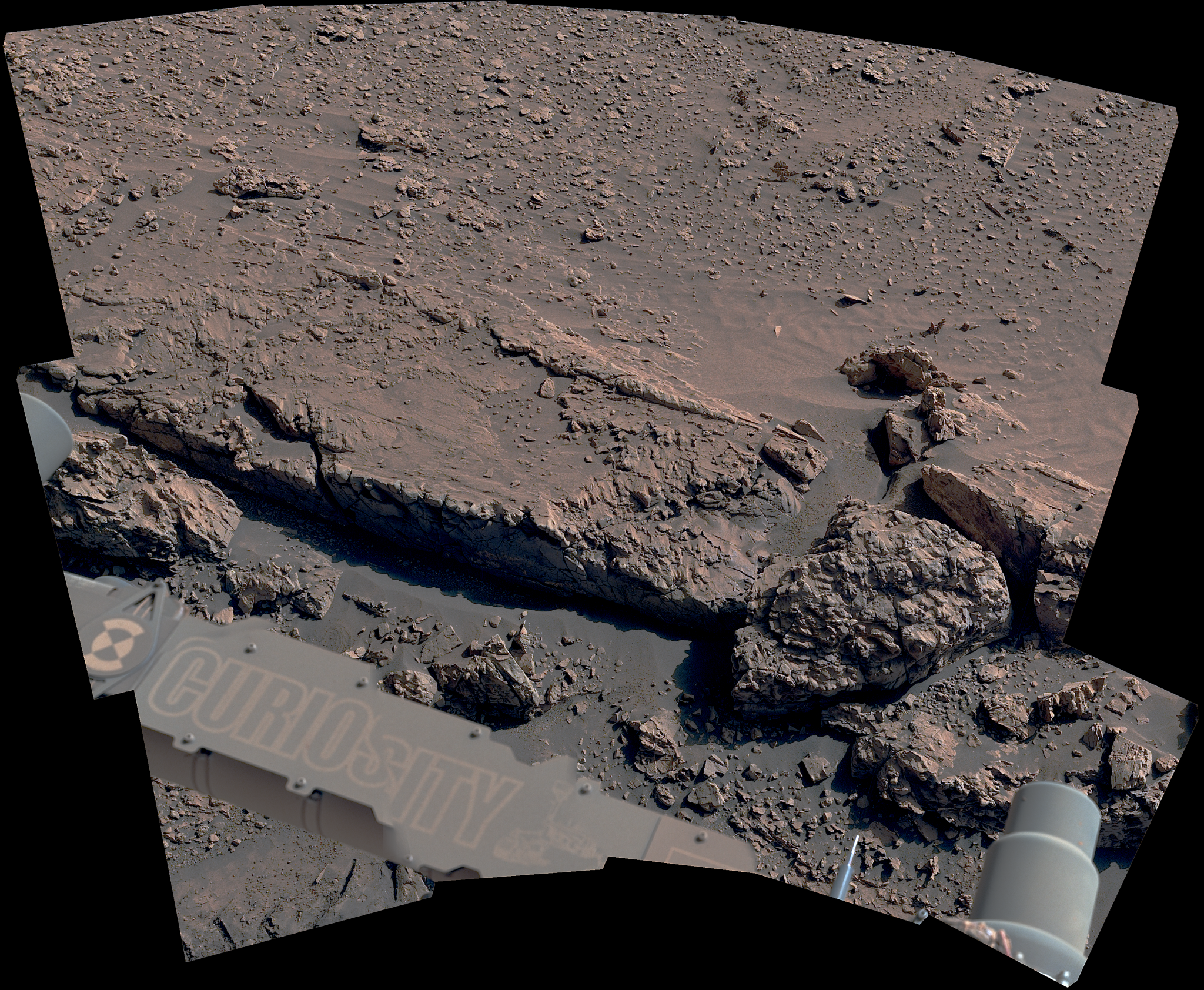5 min read
Credit: NASA/JPL-Caltech/MSSS
The rover recently drilled a sample from a new region with features that could reveal whether Mars' subsurface once provided an environment suitable for life.
New images from NASA's Curiosity Mars rover show the first close-up views of a region scientists had previously observed only from orbit. The images and data being collected are already raising new questions about how the Martian surface was changing billions of years ago. The Red Planet once had rivers, lakes, and possibly an ocean. Although scientists aren't sure why, its water eventually dried up and the planet transformed into the chilly desert it is today.
By the time Curiosity's current location formed, the long-lived lakes were gone in Gale Crater, the rover's landing area, but water was still percolating under the surface. The rover found dramatic evidence of that groundwater when it encountered crisscrossing low ridges, some just a few inches tall, arranged in what geologists call a boxwork pattern. The bedrock below these ridges likely formed when groundwater trickling through the rock left behind minerals that accumulated in those cracks and fissures, hardening and becoming cementlike. Eons of sandblasting by Martian wind wore away the rock but not the minerals, revealing networks of resistant ridges within.

The ridges Curiosity has seen so far look a bit like a crumbling curb. The boxwork patterns stretch across miles of a layer on Mount Sharp, a 3-mile-tall (5-kilometer-tall) mountain whose foothills the rover has been climbing since 2014. Intriguingly, boxwork patterns haven't been spotted anywhere else on the mountain, either by Curiosity or orbiters passing overhead.
"A big mystery is why the ridges were hardened into these big patterns and why only here," said Curiosity's project scientist, Ashwin Vasavada of NASA's Jet Propulsion Laboratory in Southern California. "As we drive on, we'll be studying the ridges and mineral cements to make sure our idea of how they formed is on target."
Important to the boxwork patterns' history is the part of the mountain where they're found. Mount Sharp consists of multiple layers, each of which formed during different eras of ancient Martian climate. Curiosity essentially "time travels" as it ascends from the oldest to youngest layers, searching for signs of water and environments that could have supported ancient microbial life.
The rover is currently exploring a layer with an abundance of salty minerals called magnesium sulfates, which form as water dries up. Their presence here suggests this layer emerged as the climate became drier. Remarkably, the boxwork patterns show that even in the midst of this drying, water was still present underground, creating changes seen today.

Scientists hope to gain more insight into why the boxwork patterns formed here, and Mars recently provided some unexpected clues. The bedrock between the boxwork ridges has a different composition than other layers of Mount Sharp. It also has lots of tiny fractures filled with white veins of calcium sulfate, another salty mineral left behind as groundwater trickles through rock cracks. Similar veins were plentiful on lower layers of the mountain, including one enriched with clays, but had not been spotted in the sulfate layer until now.
"That's really surprising," said Curiosity's deputy project scientist, Abigail Fraeman of JPL. "These calcium sulfate veins used to be everywhere, but they more or less disappeared as we climbed higher up Mount Sharp. The team is excited to figure out why they've returned now."
New Terrain, New Findings
On June 8, Curiosity set out to learn about the unique composition of the bedrock in this area, using the drill on the end of its robotic arm to snag a sample of a rock nicknamed "Altadena." The rover then dropped the pulverized sample into instruments within its body for more detailed analysis.
Drilling additional samples from more distant boxwork patterns, where the mineral ridges are much larger, will help the mission make sense of what they find. The team will also search for organic molecules and other evidence of an ancient habitable environment preserved in the cemented ridges.
As Curiosity continues to explore, it will be leaving a new assortment of nicknames behind, as well. To keep track of features on the planet, the mission applies nicknames to each spot the rover studies, from hills it views with its cameras to specific calcium sulfate veins it zaps with its laser. (Official names, such as Aeolis Mons - otherwise known as Mount Sharp - are approved by the International Astronomical Union.)
The previous names were selected from local sites in Southern California, where JPL is based. The Altadena sample, for instance, bears the name of a community near JPL that was severely burned during January's Eaton Canyon fire. Now on a new part of their Martian map, the team is selecting names from around Bolivia's Salar de Uyuni, Earth's largest salt flat. This exceptionally dry terrain crosses into Chile's Atacama Desert, and astrobiologists study both the salt flat and the surrounding desert because of their similarity to Mars' extreme dryness.
More About Curiosity
Curiosity was built by NASA's Jet Propulsion Laboratory, which is managed by Caltech in Pasadena, California. JPL leads the mission on behalf of NASA's Science Mission Directorate in Washington as part of NASA's Mars Exploration Program portfolio.
For more about Curiosity, visit:
science.nasa.gov/mission/msl-curiosity






